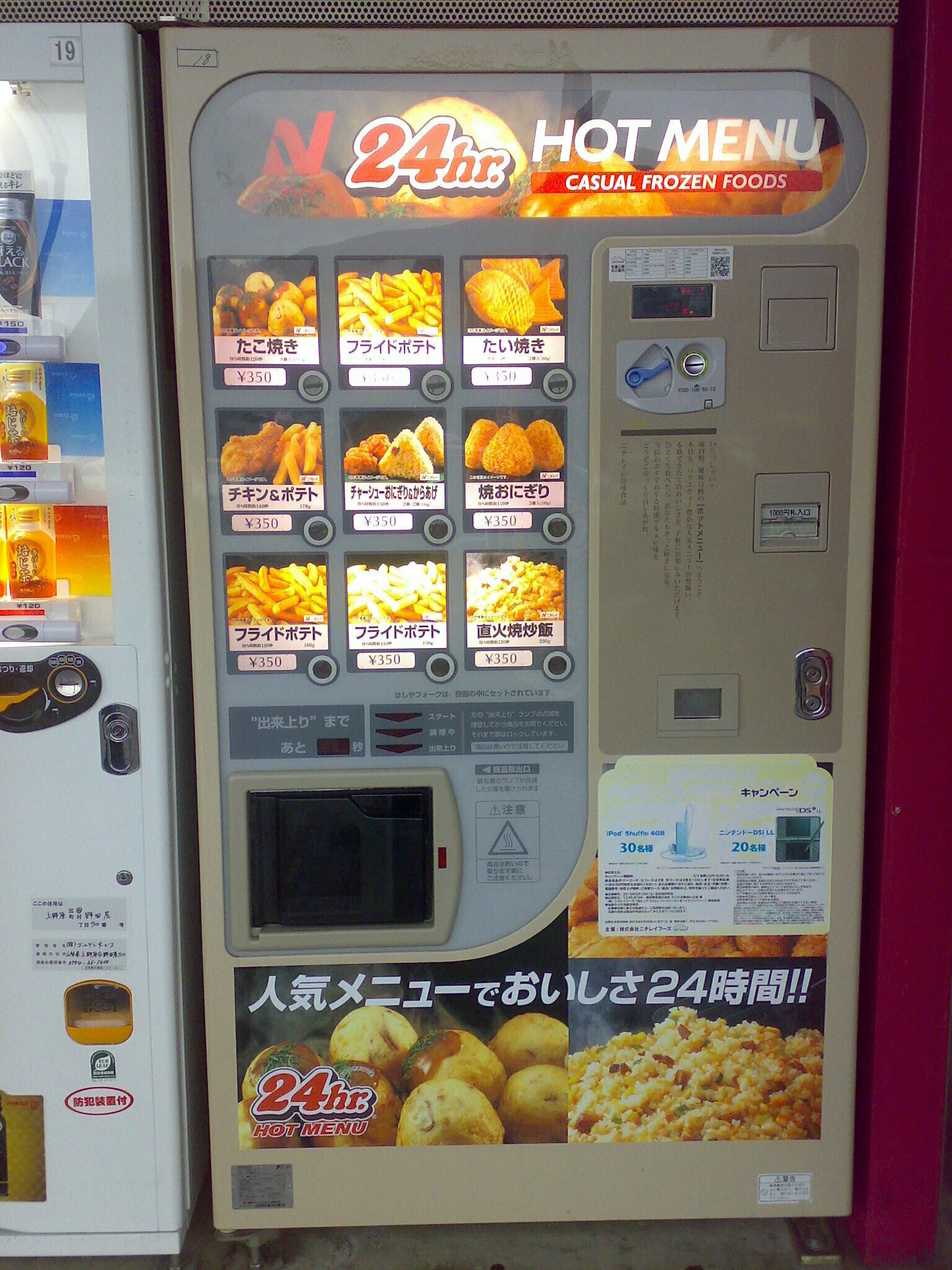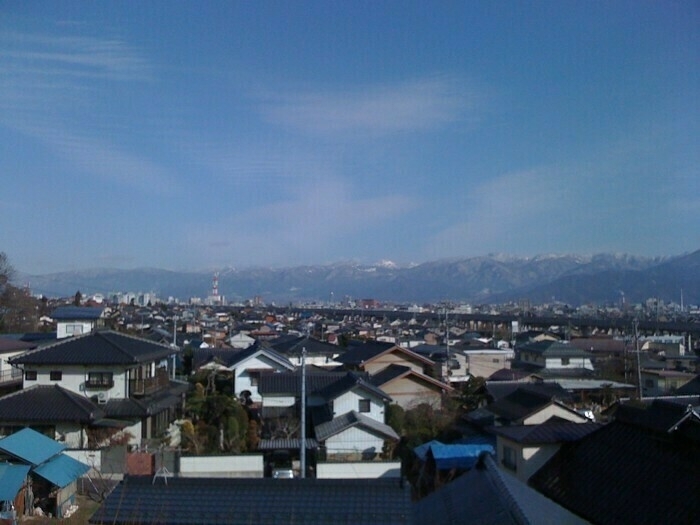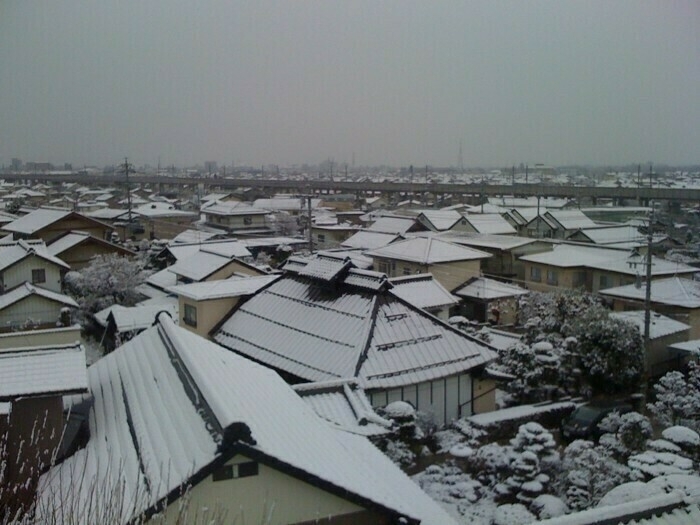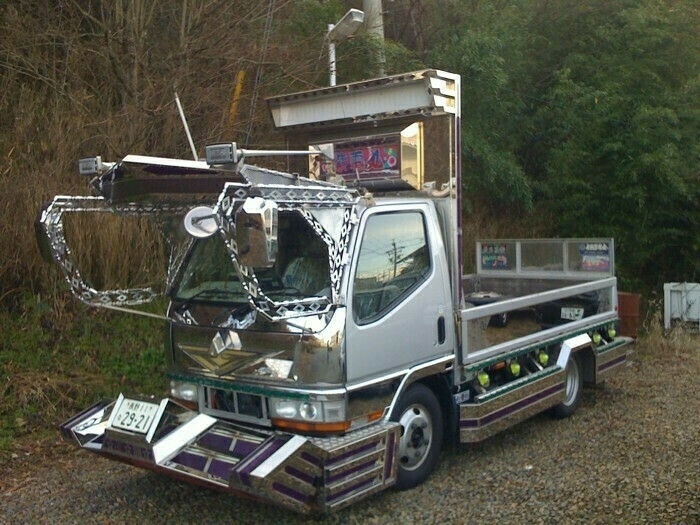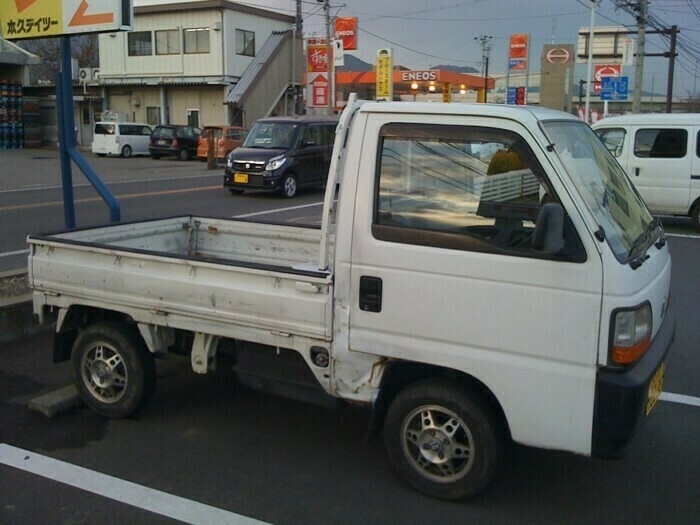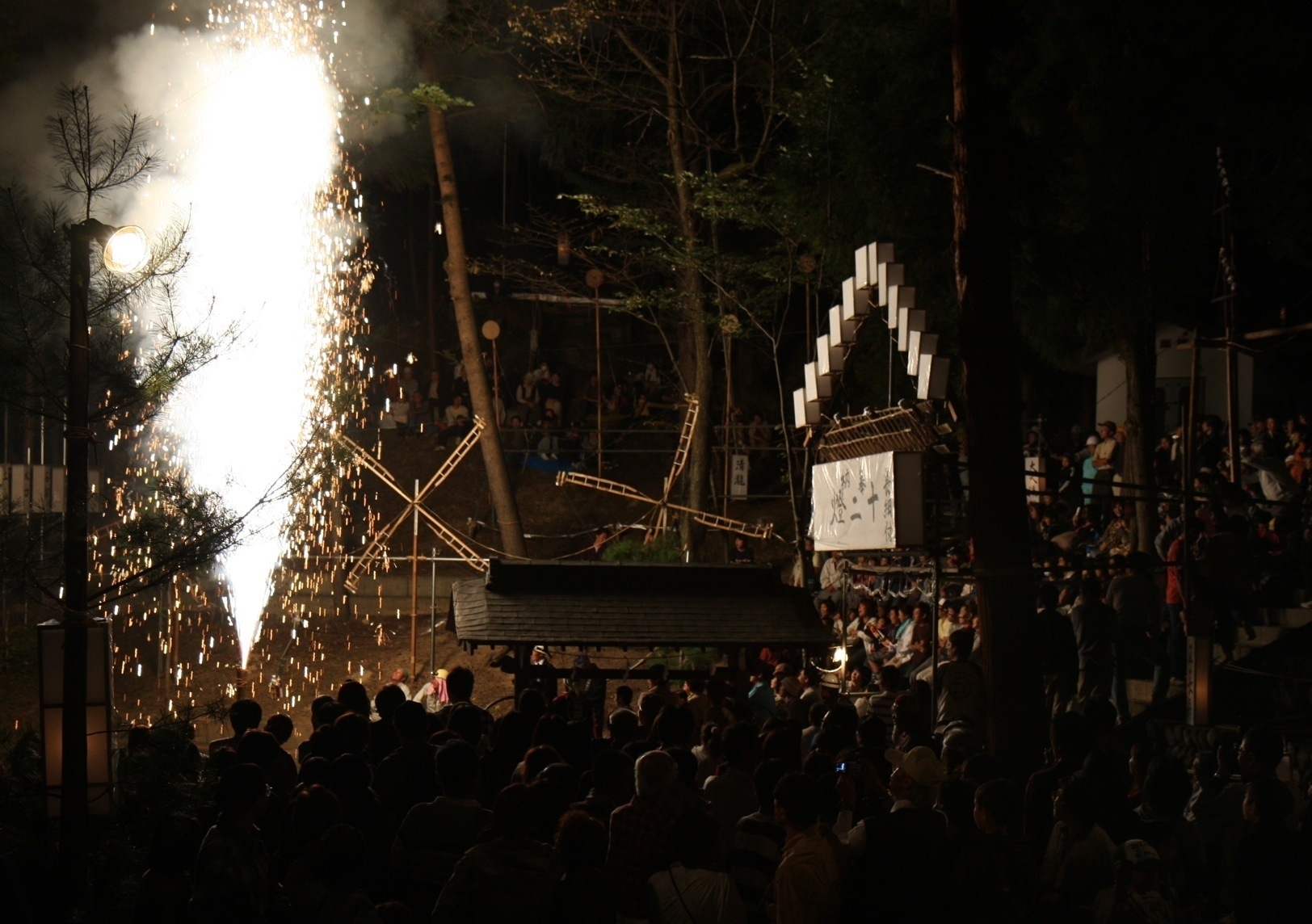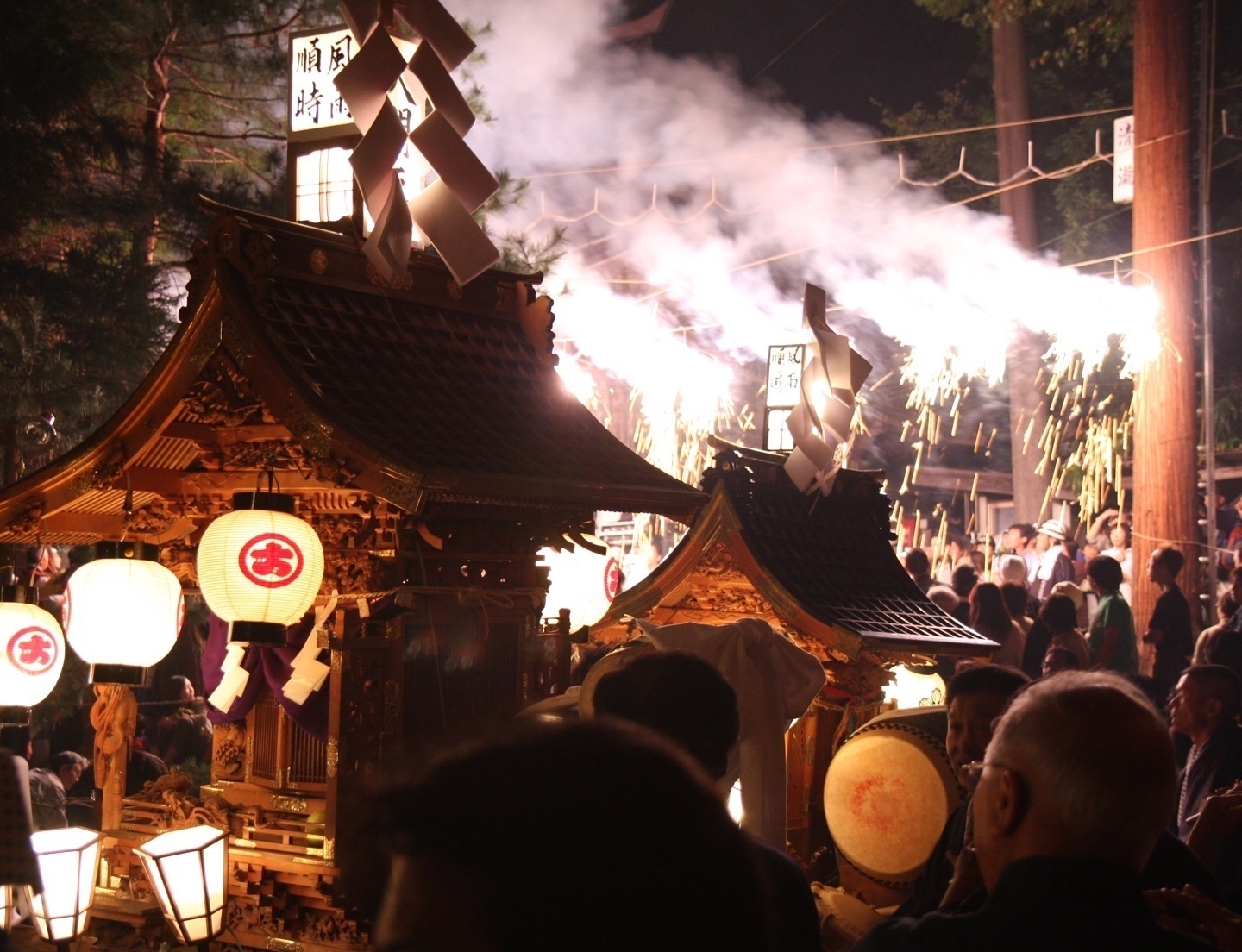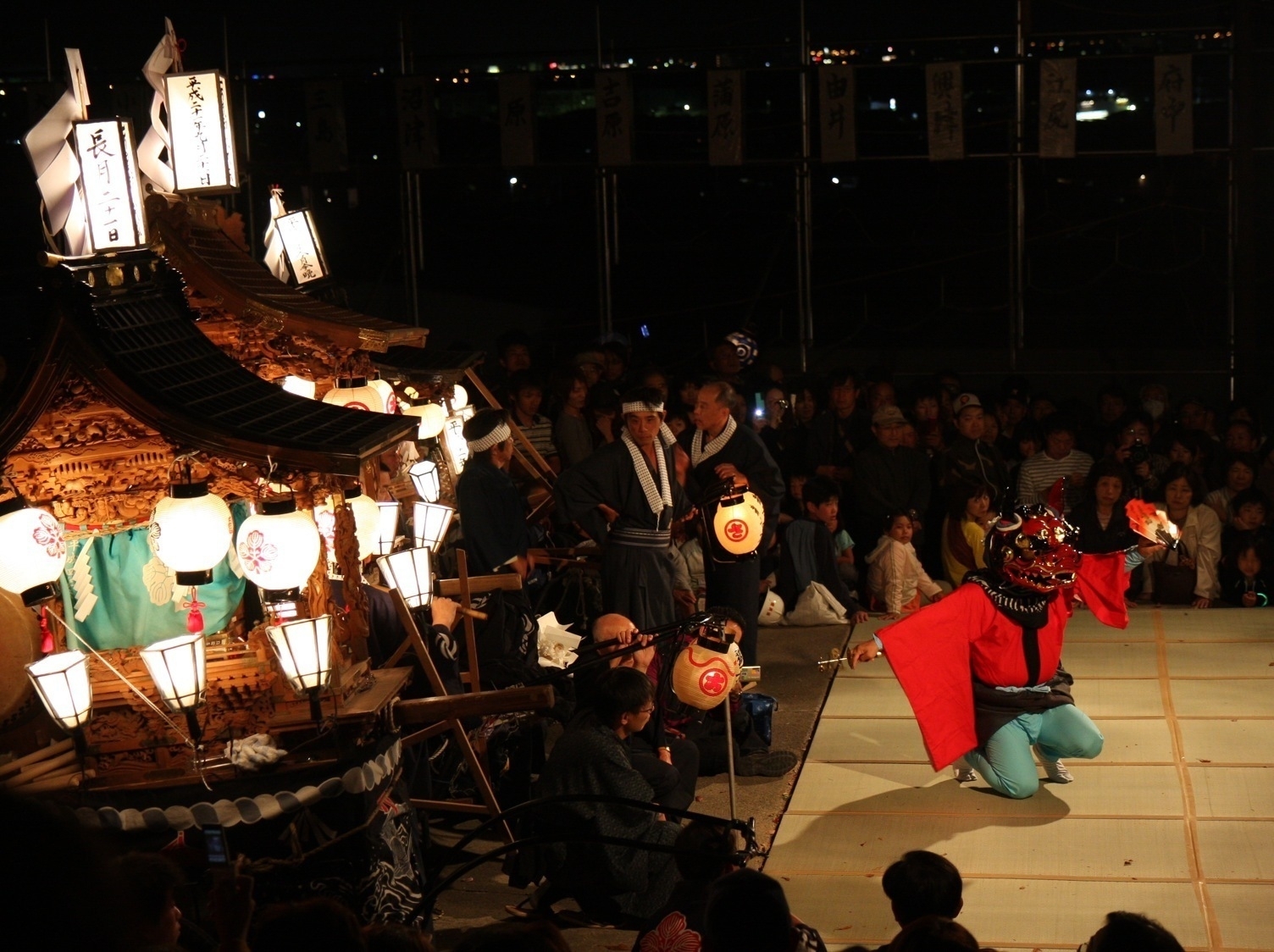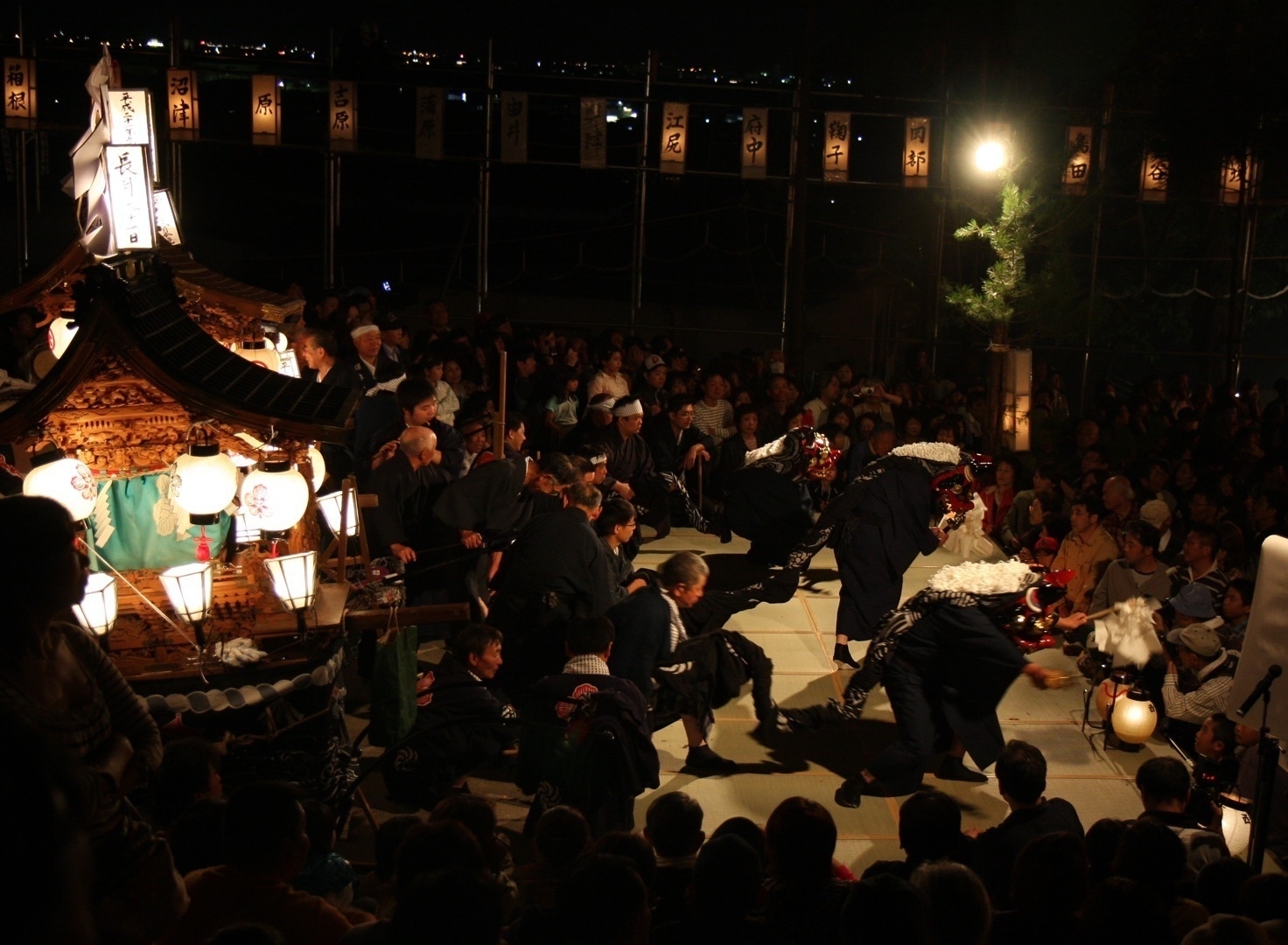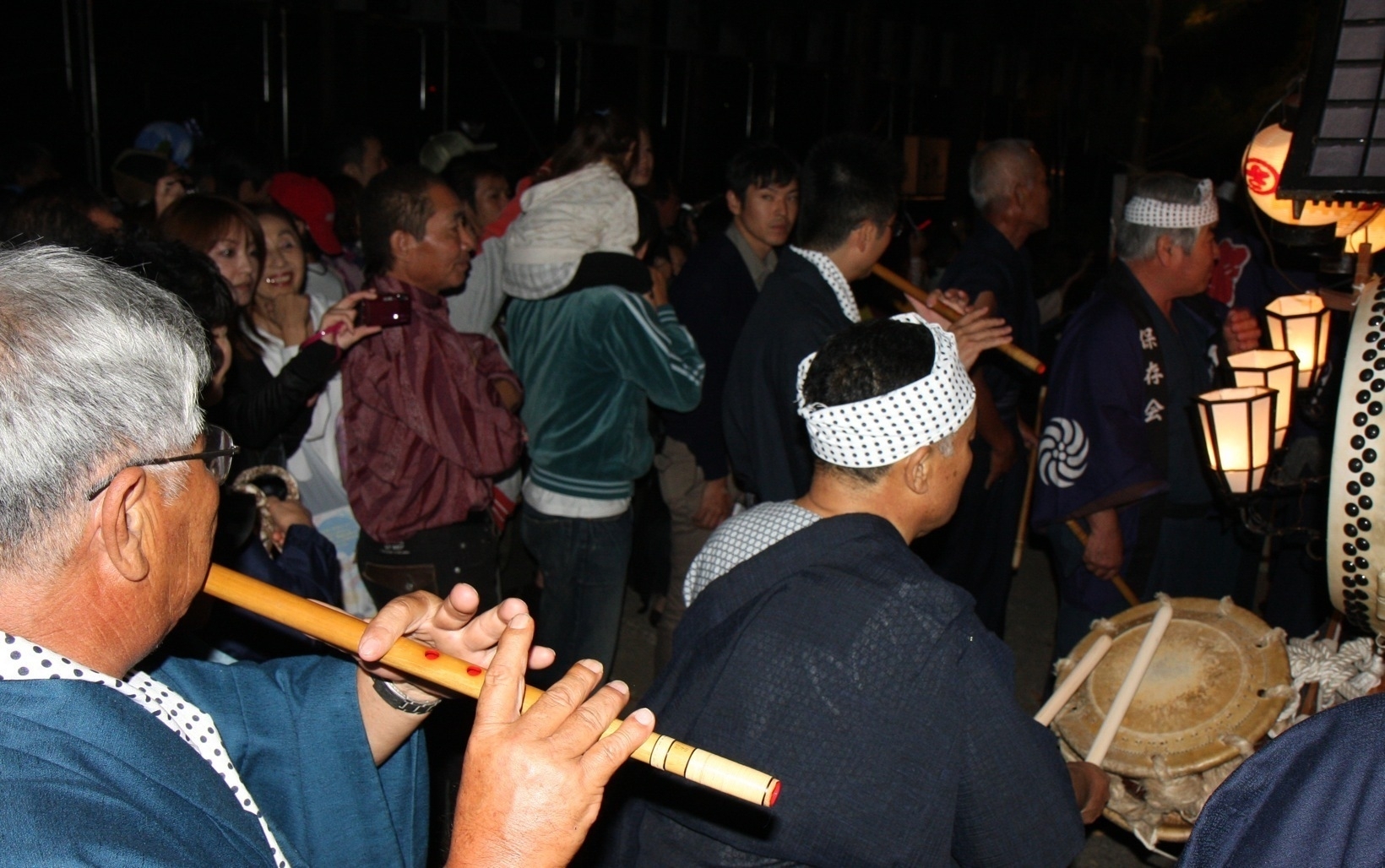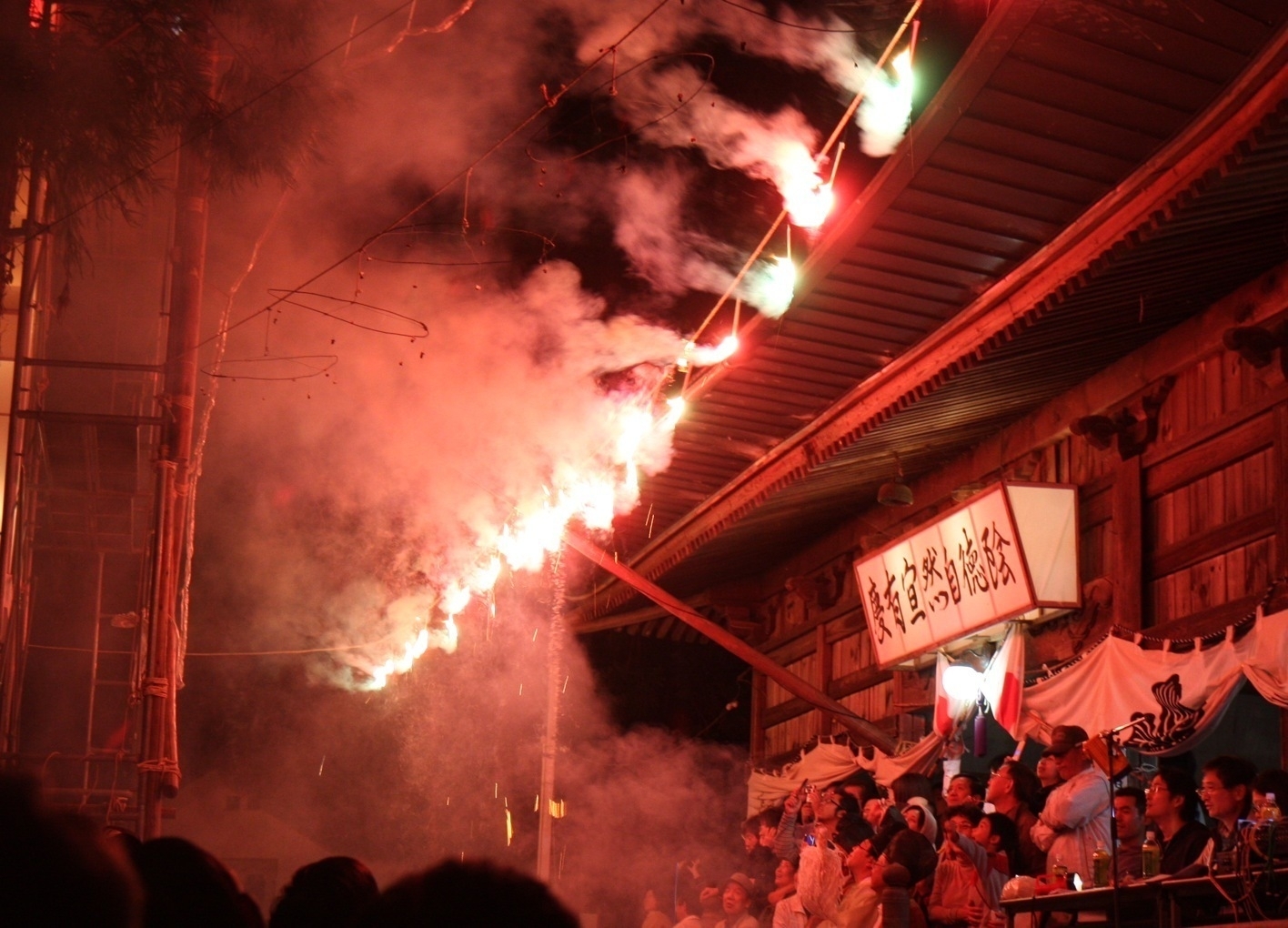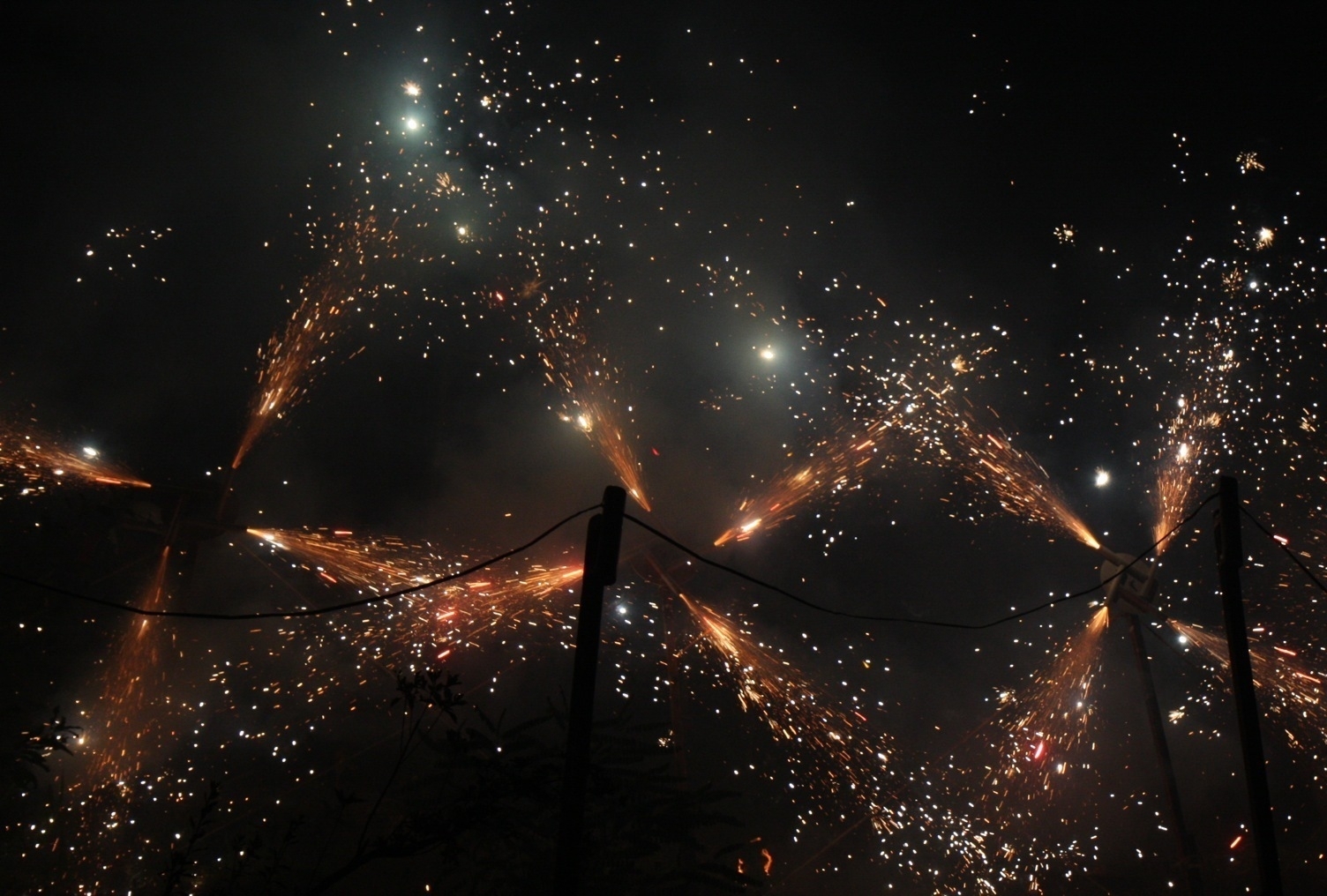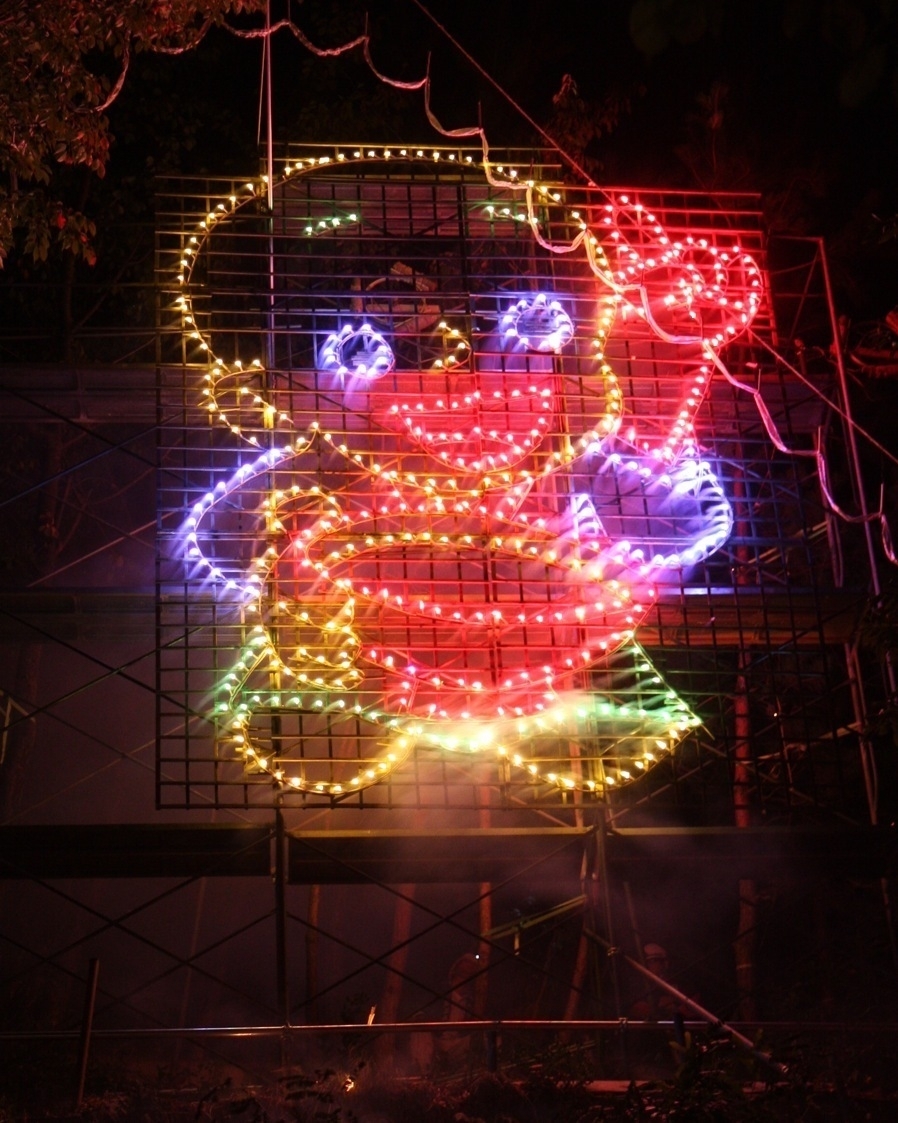Amori (安茂里) is the area outside Nagano city where we live, and once a year they have a festival. Considering Amori is just a suburb the festival is surprisingly large and impressive.
The festival takes place in and around the Saigawa shrine (犀川神社) nestled in the trees about 5 minutes walk from our apartment. Leading up to it were a few food stalls around which dozens of children hang out, buying food and toys, and saying hello to foreign-looking blokes (me). For the festival, a metal framework is built around the shrine grounds, onto which lanterns, fireworks and crackers are attached.
Inside the grounds the throngs of people were finding space to sit or stand, and were directed by the many marshals so that they stay clear of the areas where the various firecrackers are let off. You can see this in the first photo, with the shrine's entrance to the right.
At 9pm the performance begun, and lanterns and wooden portable shrines (神輿) were carried in and the lion dancing started. Lion dancing (獅子舞) I'm told is done to pray for a good upcoming harvest - for the rice, apples and other produce in our area - and also for the coming year. There were two types of dances performed, one in a solitary red outfit, and then one with three lions dressed in black, with long cloaks used to move them into various positions. I've been told the fact there are three lions for the second dance possibly represent three separate districts of Amori. Surprisingly the three black lions don't dance in rhythm with each other, instead each seemingly doing their own thing, but the dancing is accompanied with more playing of the wooden flutes and drums, and sporadic lighting up of lanterns and firecrackers around the perimeter.
At each end of the arena there were sets of huge
catherine wheels which let out a loud scream as they turned and threw sparks out everywhere. I was just a few feet away so it was pretty impressive. The last photo is a lit version of
Marukome Boy (マルコメ君), a mascot for a large local miso company. I have no idea why the relation, but I guess it's tradition that it's used here. Anyhow it's colourful.
Of course there were also proper fireworks sent up into the sky at various points, but without a tripod or video function, and with the partial tree cover overhead from where I was standing, it was somewhat tricky to get anything decent in the way of photos. As a finale they let fireworks fly on wires above the heads of the crowd, which then light up sparking firecrackers up in the trees. These let out huge amounts of sparks which fall onto the ground, and the heads of people who don't heed warnings from the marshals to clear the area. The first time I went and experienced this it was so strange; here are the Japanese, usually a cautious people, doing something that wouldn't be allowed for health and safety reasons in my own country. I should mention though that all around the outside I noticed the marshals carrying and using extinguishers of some sort to make sure none of the plant life caught fire - definitely important considering the location.
In all it lasted around 90 minutes, and thankfully the weather stayed clear.
